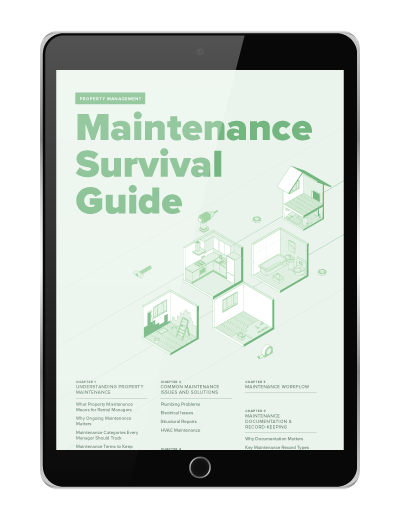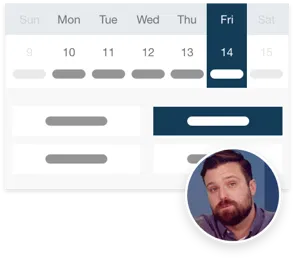In our most recent Industry Report, a record 82% of property management companies that we surveyed reported portfolio growth over the past two years. That’s an impressive stat, but it may just be a preview of what’s to come. An even larger number—92%—of respondents expect to expand their portfolios further in 2024 and 2025.
Start your free trial today!
Try Buildium for free for 14 days. No credit card needed.
Start Your TrialClearly property managers are optimistic about the future. But optimism alone doesn’t lead to an effective growth strategy. For that, you’ll need to know which markets hold the most potential for your business and how to expand into those markets successfully.
This guide covers various ways in which you can diversify your property management portfolio by expanding into new locations and property types, along with how to best position your business when entering competitive markets.
1. Look Beyond Primary Markets
The world of real estate seems to revolve around primary markets—so it’s easy for property managers to feel like the only viable avenue for growth is to expand their presence into powerhouse cities such as New York, Boston, and San Francisco. Sure, those markets offer high occupancy rates and competitive rents, but secondary markets (generally defined as mid-sized cities experiencing growth) offer plenty of opportunity for property managers to diversify into promising new markets that offer many of the same benefits.
For property managers, turning to secondary markets to diversify your portfolio puts you at the center of fast population and price growth without the cutthroat competition of a primary market. In the past, these secondary markets tended to include Sun Belt cities, namely Nashville, Charlotte, Austin, and Raleigh, among others. However, the supply of apartments has increased rapidly, raising vacancy rates and slowing growth.
Forward-looking property managers are now looking to other areas to expand their business, in states such as Pennsylvania, Wisconsin, Michigan, and Ohio. To help you pinpoint where to expand, we’ve compiled 60 of the most promising up-and-coming real estate markets, using data from the National Association of Realtors (NAR) along with rankings from the Wall Street Journal, Realtor.com, PricewaterhouseCoopers, the Urban Land Institute, and U.S. News.
This list can point you in the right direction, but be sure to take a close look at trends in your new target market before committing. Some factors to watch out for include rent growth, vacancy rates, cap rates, and home price growth. All of these can be accessed on NAR’s website.
You’ll also want to research established property management companies in the area, scan through local rental laws, get some sample rent rolls, and start some preliminary outreach to real estate professionals and vendors in the area to get a clear idea of what it takes to succeed in that market.
2. Add Single-Family Properties to Your Portfolio
According to our most recent research on renter demographics, multigenerational households and couples with kids have been the fastest growing renter types over the past two years. For many of these growing families, the housing market is still out of reach, making single-family rental properties an attractive option.
If you’re not already active in the single-family market, now might be the right time to jump in.
If you’re primarily used to managing multifamily units, expanding into single-family properties might seem easy enough. There are some major differences to be aware of, however.
For one, you won’t be able to benefit from the efficiency of a single vendor or project catering to several tenants at once. Typically, your units will be more spread out, so you’ll need to factor in the logistics of hopping between properties, along with all the specialized expertise, documentation and services that come with that.
You may even manage properties in different municipalities, counties, or even states. It will be important to keep track of varying rental, zoning, and accessibility regulations, not to mention rules governing waste removal, irrigation, and noise ordinances, to name a few.
Tenants will also have different preferences, prioritizing privacy, space, and a sense of home without the burden of actual homeownership. Your team needs to be ready to accommodate these preferences.
There’s a lot of prep that goes into expanding your portfolio into the single-family market, but, with both economic and demographic trends pointing to a stable demand for these units, it’s often worth the investment. We’ve even laid out a clear path to get started.
Our guide, “5 Steps to Succeed in Single-Family Property Management,” walks you through everything from market research to fine-tuning your accounting to accommodate single-family units.
For even more inspiration, you can watch how 21st Century Property Management, built up a portfolio of 150 single-family doors in just seven months:
3. Jump into the Multifamily Market
With roughly 39% of U.S. renters living in an apartment, the multifamily market remains a huge component of the industry—and one that growth-focused property managers would be hard-pressed to ignore.
With multifamily properties, you can take advantage of economies of scale, where the resources you spend on one project can benefit an entire building full of tenants. But, that same concentration of units can also create challenges. You may find yourself navigating a web of safety codes, dealing with more regular wear and tear in your buildings, or mitigating disputes between tenants. All of these considerations can create a barrier to entry for property managers that are new to the multifamily market.
Adding multifamily units to your portfolio will require you to take a look at your staff’s bandwidth and capabilities. You may need to invest in dedicated reception or customer service team members as well as leasing and sales agents. Bringing your maintenance team in-house might also become a cost-effective option.
To account for the typically higher turnover rates with multifamily properties, you should have more reserve funds at the ready. This can help soften the impact of higher insurance costs, common area upkeep, and larger repairs. You can also adjust your rent and leasing structure to account for these changes.
Our guide, “6 Steps to Expand to Multifamily Property Management” covers all these tactics and more in greater detail. We even have an in-depth video on getting started in multifamily property management that you can watch below:
4. Expand into Community Associations
Jumping into the community associations market can seem like even more of a hurdle than introducing single-family or multifamily units to your portfolio, and oftentimes it is. But, more people than ever currently live in HOAs, COAs, and other associations, and, per our most recent Industry Report, these property types are near the top of the list of areas property managers intend to expand their services into over the next two years.
There are some compelling reasons for that. For one, the majority of new homes under construction are being built in community associations, meaning there’s no shortage of demand for effective HOA management. Contracts with HOAs can be longer term than those with property owners, lending some welcome stability to client retention and relationships.
If you’re considering working with associations, you’ll need to adapt your approach to management. There’s a separate layer of preparation and responsibilities that go into association operations. This might require you to restructure your business or create a new branch specifically for this part of your portfolio.
One of the first steps you should take is to determine the location where you want to set up shop and research the association laws and licensing requirements required to operate there. Resources such as the Homeowners Protection Bureau and Community Association Managers International Certification Board can be invaluable in finding these details.
Keep in mind that each association has its own culture and way of operating. You’ll want to familiarize yourself with the demographics, lifestyles, and defining features of the specific areas you’re expanding into, along with common association bylaws, rules, and board priorities in the area. You might find that homeowner privacy is paramount to one neighborhood, while fostering a sense of community is valued in another. Doing this research can help you market your services and win new business quickly.
You can start to plan a successful expansion into associations in our guide: “7 Steps to Expand Your Management Business Into Community Associations.” In it you’ll find more details on making the right preparations, including how to structure your team, operations, and marketing efforts.
And, while we’re on marketing, there are some useful steps to take to position your business for growth, no matter which way you plan to diversify your property management portfolio. We’ll explore those steps in the next sections.
5. Find Your Edge over the Competition
Whether you’re moving into a new region, expanding your services to community associations, or adding new property types to your portfolio, you’ll want to find ways that your company can stand out from the competition.
In today’s competitive real estate market, many property managers are finding themselves going toe-to-toe with big developers. Not only that, but growing markets create competition for qualified employees, leaving many smaller property management companies feeling frustrated and defeated. But if you’ve been told that you can’t compete with big developers, you’ve been given bad advice.
Find your edge against the competition by building up your local market knowledge. Most big developers have a national or international presence, leaving them scrambling to make sense of the local market as their new buildings go up.
Invest in a local approach by leveraging your knowledge of the community’s economy, trends, and demographics. If you’re new to an area, this could start with reaching out to contacts in the industry, other real estate professionals, and local property owners. Do some preliminary sleuthing on the competition, taking note of their company structure, marketing strategies, and the services they highlight.
Speaking of services, take time to understand exactly what amenities and services renters value for your specific property type. Also look at the top priorities for property owners and association boards. These preferences shift frequently and can vary between regions and even neighborhoods. Buildium has a wealth of up-to-date industry research to help you stay on top of the latest trends.
Another approach is getting to know your existing residents and clients, measuring their satisfaction, and getting direct feedback on what works and what doesn’t. This can help you identify your current strengths as a company and gaps you’ll need to fill to meet the expectations of new clients and residents.
Using research and feedback from the stakeholders you already work with, you can identify your edge—the factor(s) that will set you apart, and help you attract clients as you diversify your portfolio.
6. Market Your Edge Effectively
Once you understand your target audience and the distinct value you bring to the table, it’s time to put your marketing outreach into motion.
Take a quick audit of your website, social media channels, and the rest of your online presence to be sure that all your messaging reflects the new scope of your business. Some actions you can take to highlight your focus on a particular market or portfolio type include
- Updating your home and social profile pages
- Creating new blog posts, social posts, or even simply sharing and commenting on content relevant to the market
- Adding testimonials, performance metrics, and references that speak directly to how you can help clients in your new market find success
To concentrate your approach even further, you can invest in paid advertising. This can be helpful if you’re targeting a specific audience or location. Paid ads on platforms such as LinkedIn, Google, and Facebook let you experiment with different messaging and see what sticks, using analytics tools to fine-tune your marketing. By knowing which keywords and platforms connect you to a relevant audience of potential clients, you can get the most mileage out of your ad budget.
However, the burden of research and experimentation doesn’t have to fall squarely on your shoulders. You can use a service such as All Property Management that links you to local property owners and association boards who are already looking for your services. There are also marketing services out there such as Goodjuju and Upkeep Media that are designed specifically for property managers and can help you with everything from search engine optimization to creating a comprehensive marketing strategy.
We delve into the features and pricing details for all of these services and more in our review article “6 of the Best Property Management Marketing Tools and Software in 2024.”
Finally, don’t overlook the power of word-of-mouth. It’s still one of the leading ways that owners find property managers and can be especially useful if you’re trying to enter a new market. The right referral can lend credibility to your business and create a snowball effect that strengthens your reputation and recognition over time. You can get that snowball rolling by creating a referral program that incentivizes owners with discounts or rewards once they leave a review or recommend your services.
7. Set Up Consistent Systems to Manage Growth
With a clear strategy to win new clients, you’re going to need a way to accommodate them. At first, it might make sense to take a “grow-as-you-go” approach to operations, creating new systems and introducing new software to handle the needs of new multifamily buildings or community associations.
While different property types have their own management needs, that doesn’t mean that you should set up separate systems to cater to them. On the contrary, the more you can consolidate your business using a consistent set of tools and processes, the easier it will be for your team to manage a diversified portfolio.
Consistency breeds efficiency and, in property management that translates to fewer staffing constraints, a more accurate view into your overall business health (including which parts of it are over and underperforming in comparison to others), and the ability to provide reliably excellent service as your portfolio grows.
A clear-cut way to achieve this simplicity is through comprehensive property management software such as Buildium. Buildium is designed for both specialized and mixed portfolios, combining marketing, lead-to-lease, accounting, communication, maintenance, marketing, and other features into an all-in-one package. To accommodate growing businesses it includes a Marketplace of industry-specific partner solutions and an open API to customize workflows and connect to your existing software.
You can give Buildium a spin with a free 14-day trial—no credit card required.
Diversifying your property management portfolio is one of the best ways to grow your business and protect against a changing market, but success isn’t guaranteed. It comes from having a clear vision of where and how you plan to expand and, with this guide, you have the roadmap to get started.
If you’re looking for other ways to grow your business, be sure to check out our other posts:
Read more on Associations


